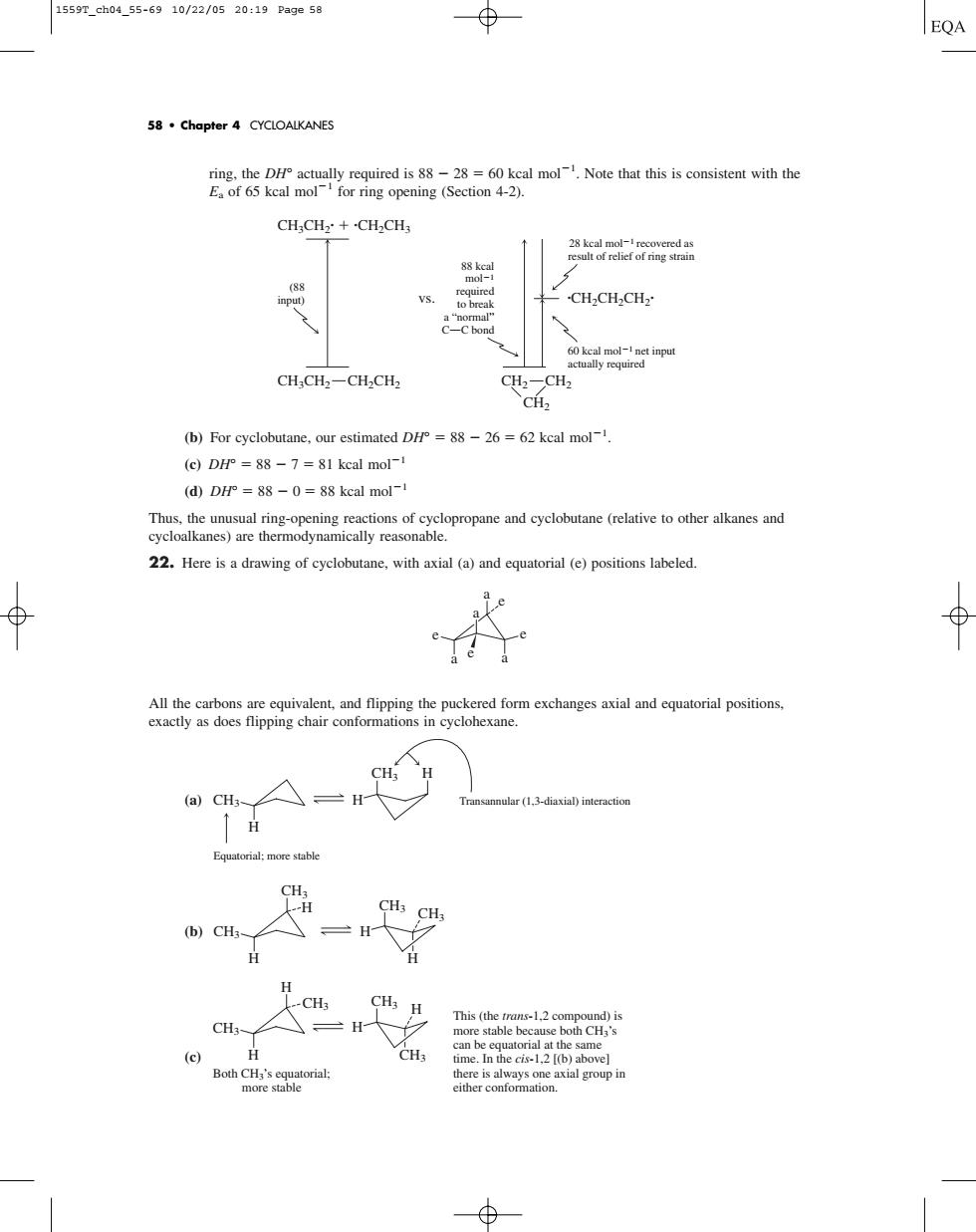正在加载图片...

1559r_ch04.55-6910/22/0520:19Page5日 58.Chapter 4 CYCLOALKANES gopening (Section 4-2 CH,CH>+CH,CHs orle CH.CH2-CH.CH2 cn CH (b)For cyclobutane.our estimated DH=88-26=62 kcal mol- (e)D 88-7=81 kcal mol-1 (d)DH=88-0=88 kcal mol-1 22.Here is a drawing of cyclobutane,with axial (a)and equatorial (e)positions labeled. axial and equatorial positions CH H (1.3-diaxial)interactio b)CH: CH: This (the t ns-1 2 c e (c) ime.In the cis-1.2(b)abovelring, the DH° actually required is 88 28 60 kcal mol1 . Note that this is consistent with the Ea of 65 kcal mol1 for ring opening (Section 4-2). (b) For cyclobutane, our estimated DH° 88 26 62 kcal mol1 . (c) DH° 88 7 81 kcal mol1 (d) DH° 88 0 88 kcal mol1 Thus, the unusual ring-opening reactions of cyclopropane and cyclobutane (relative to other alkanes and cycloalkanes) are thermodynamically reasonable. 22. Here is a drawing of cyclobutane, with axial (a) and equatorial (e) positions labeled. All the carbons are equivalent, and flipping the puckered form exchanges axial and equatorial positions, exactly as does flipping chair conformations in cyclohexane. (a) (b) (c) H H H H CH3 CH3 CH3 CH3 Both CH3’s equatorial; more stable This (the trans-1,2 compound) is more stable because both CH3’s can be equatorial at the same time. In the cis-1,2 [(b) above] there is always one axial group in either conformation. H H H H CH3 CH3 CH3 CH3 H H H CH3 CH3 Equatorial; more stable Transannular (1,3-diaxial) interaction a a a a e e e e CH3CH2· ·CH2CH3 CH2CH2 ·CH2CH2CH2· CH3CH2 CH2 CH2 CH2 (88 input) vs. 88 kcal mol1 required to break a “normal” COC bond 28 kcal mol1 recovered as result of relief of ring strain 60 kcal mol1 net input actually required 58 • Chapter 4 CYCLOALKANES 1559T_ch04_55-69 10/22/05 20:19 Page 58��������